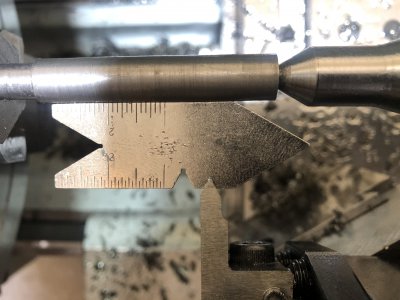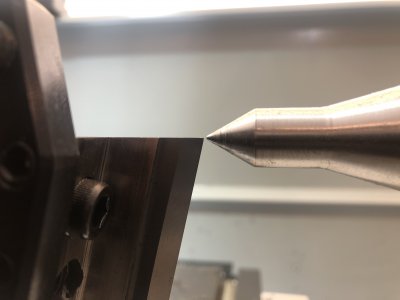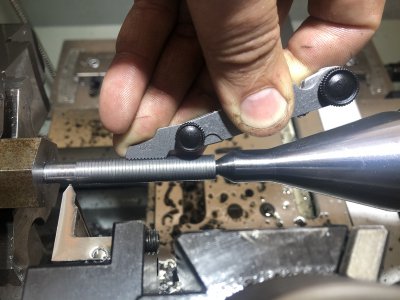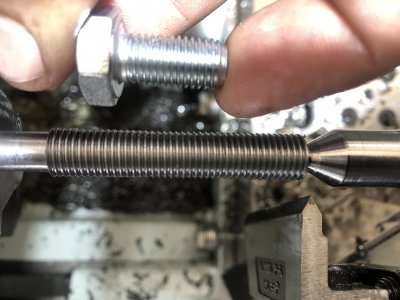- Joined
- Dec 20, 2012
- Messages
- 9,422
The (single, see photo) bolt was tight, and it is horizontal.
I’m glad you told me that about the thread relief (safety groove). I have been making it the minor diameter.
Okay, the helix angle of your cutter can be adjusted with the set screws on the side. The Aloris blade has no relief angle under the cutting edge. It relies on the 12 degree angle it is held at for relief; this may not be enough. If this is really the issue on the torn trailing edge and flank then advancing the top set screw a fraction of a turn and retracting the lower one will tip the blade towards the chuck. That may clean up that trailing edge.
One advantage of the deeper thread relief is that it cleans up the tail of the last thread for a very clean finish. This is good workmanship, Erik.





